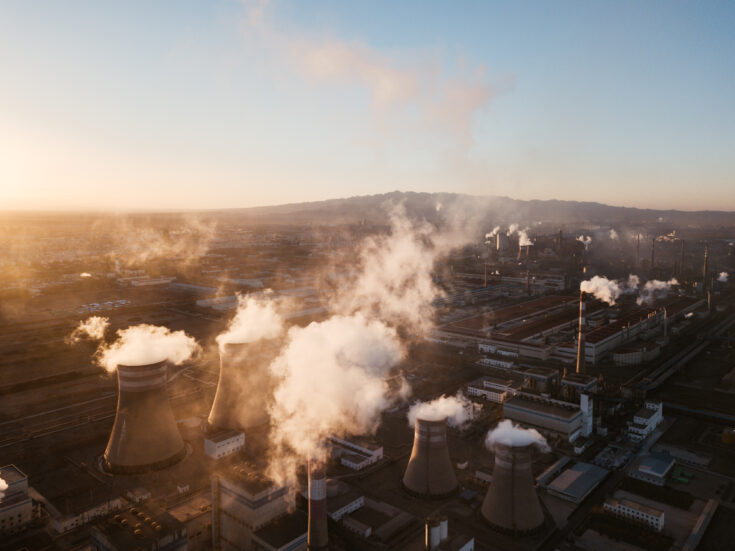The paper ‘Mechanochemical processing of silicate rocks to trap CO2’, published in in Nature Sustainability, says that almost no additional energy would be required to trap carbon dioxide (CO2). 0.5% of global emissions would be captured, which is the equivalent of planting a forest of mature trees the size of Germany.
The materials and construction industry accounts for 11% of global carbon emissions. More than 50 billion tonnes of rock are crushed worldwide every year and current crushing processes, standard in construction and mining, do not capture CO2.
Rock powders
Previous work has explored trapping carbon into single minerals by the same method. But the research at the University of Strathclyde shows this is unstable and dissolves out of the mineral when placed in water.
The paper documents how a larger proportion of CO2 can be trapped in a stable, insoluble form in rocks composed of multiple different minerals by grinding it in CO2 gas. The resulting rock powders can then be stored and used in the environment for construction and other purposes.
The calculation of 0.5% was made for Norway, as an example, because:
- the country publishes annual data on the volume of hard rock aggregate produced for their construction industry
- their annual national CO2 emissions are also documented
The global estimate is based on the assumption that Norway’s construction industry is reasonably typical. Some countries such as Australia and South Africa will actually produce far more, as they have large mining industries and will look to crush and sell the waste rock, while others may be less.
0.5% of global CO2 emissions
If the technology was adopted worldwide in aggregate production, it could potentially capture 0.5% of global CO2 emissions, 175 million tonnes of carbon dioxide annually.
As part of the Paris agreement, countries around the world agreed to pursue efforts to limit global warming to well below 2 degrees Celsius, preferably to 1.5 degrees Celsius, compared to pre-industrial levels.
To achieve this, countries must reduce their greenhouse gas emissions to ‘net zero’ by around 2050.
The work was part-funded by the Engineering and Physical Sciences Research Council’s (EPSRC) Doctoral Training Awards Grant.
Meeting net zero goals
Dr Lucy Martin, EPSRC’s Deputy Director for Cross Council Programmes said:
This breakthrough research from the University of Strathclyde, which EPSRC has proudly played a part in funding, is truly revelatory. It points to a new process for the construction industry that could significantly reduce global carbon emissions and help us meet our net zero goals.
Adapting current steps
Principal investigator Professor Rebecca Lunn, from University of Strathclyde’s Department of Civil and Environmental Engineering, said:
The hope is that the sector could reduce the emissions by adapting the current setups to trap carbon from polluting gas streams such as those from cement manufacture or gas-fired power stations.
Meeting global objectives
Co-investigator Dr Mark Stillings said:
If this process was applied, the CO2 footprint associated with building houses and public infrastructure could be greatly reduced, helping to meet global objectives to combat climate change.
Top image: Credit: AerialPerspective Works, E+ via Getty Images

